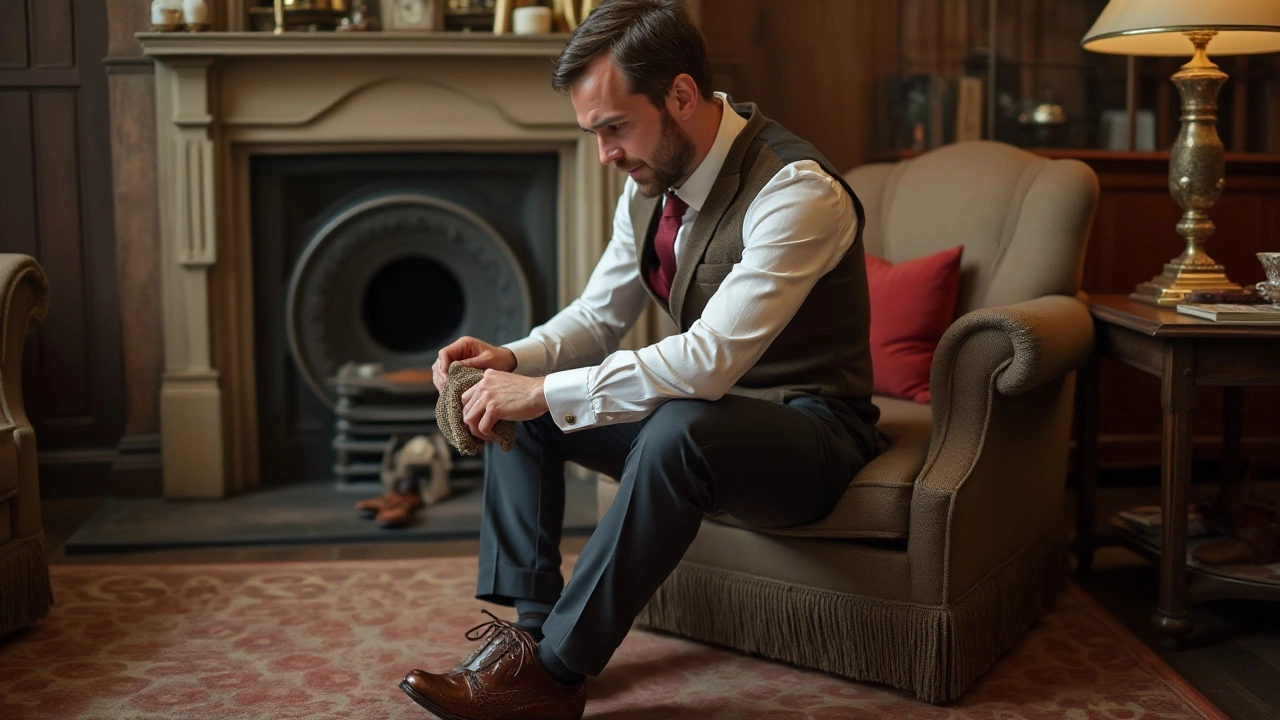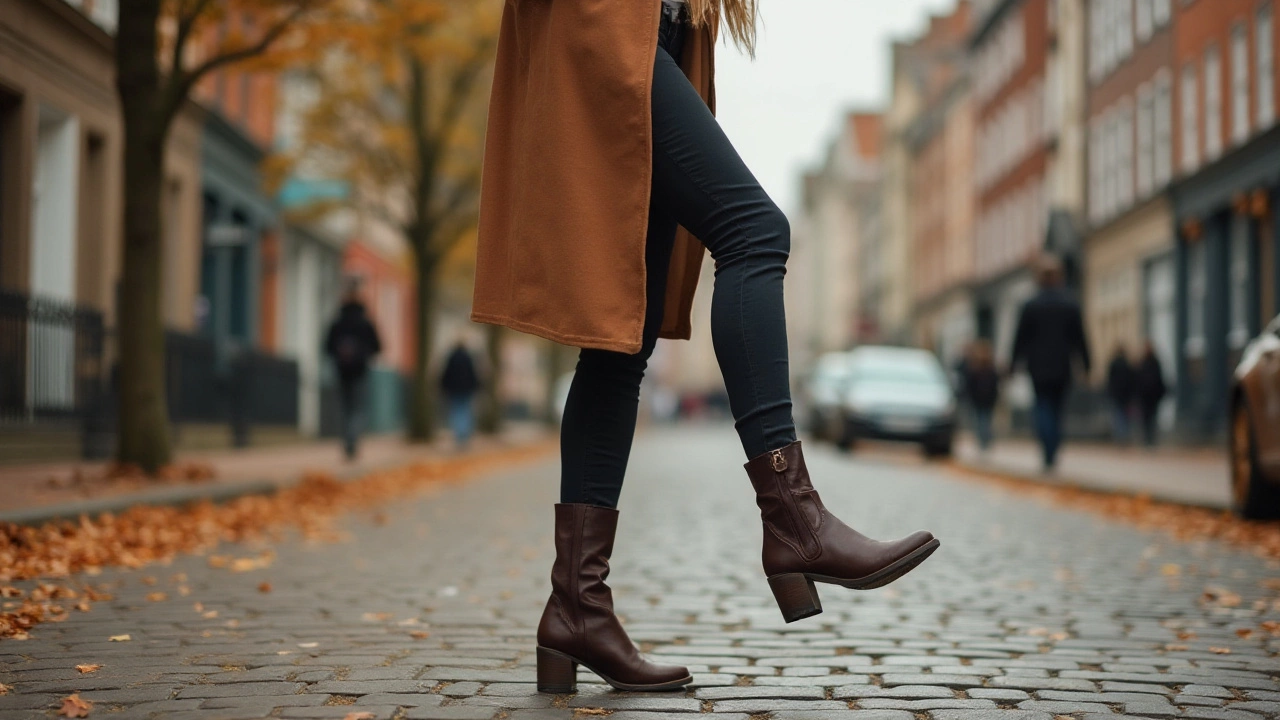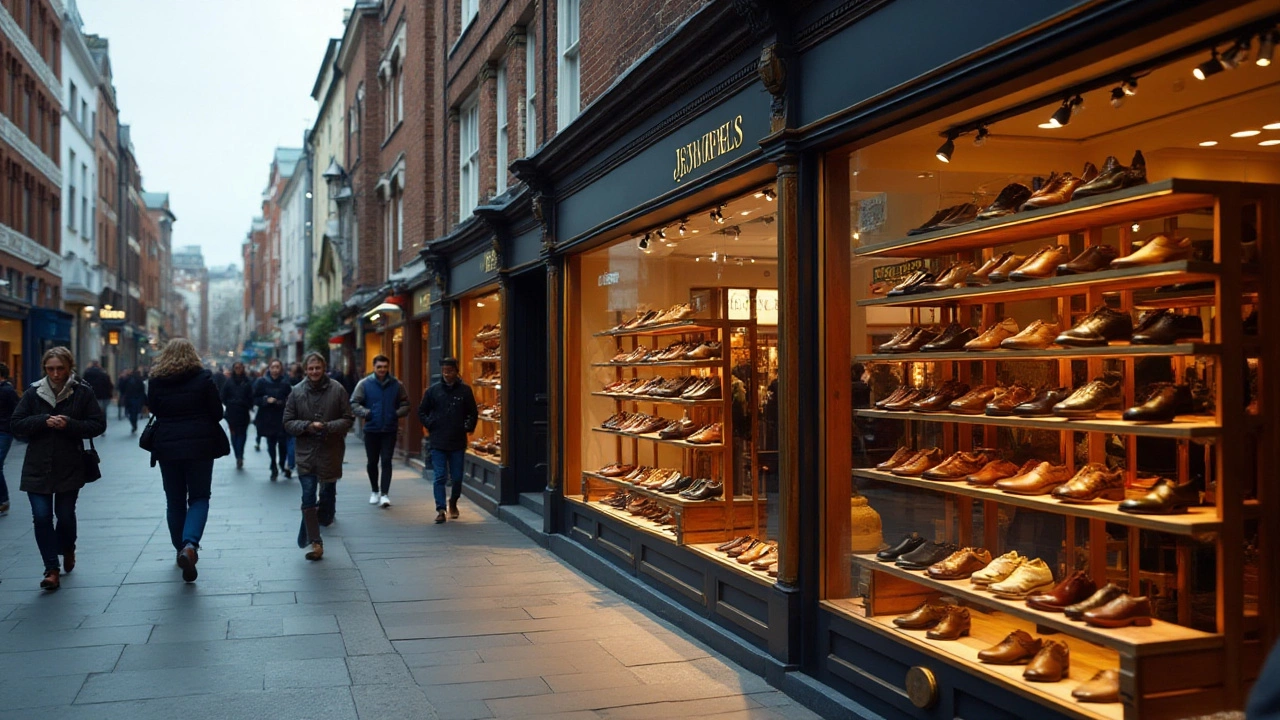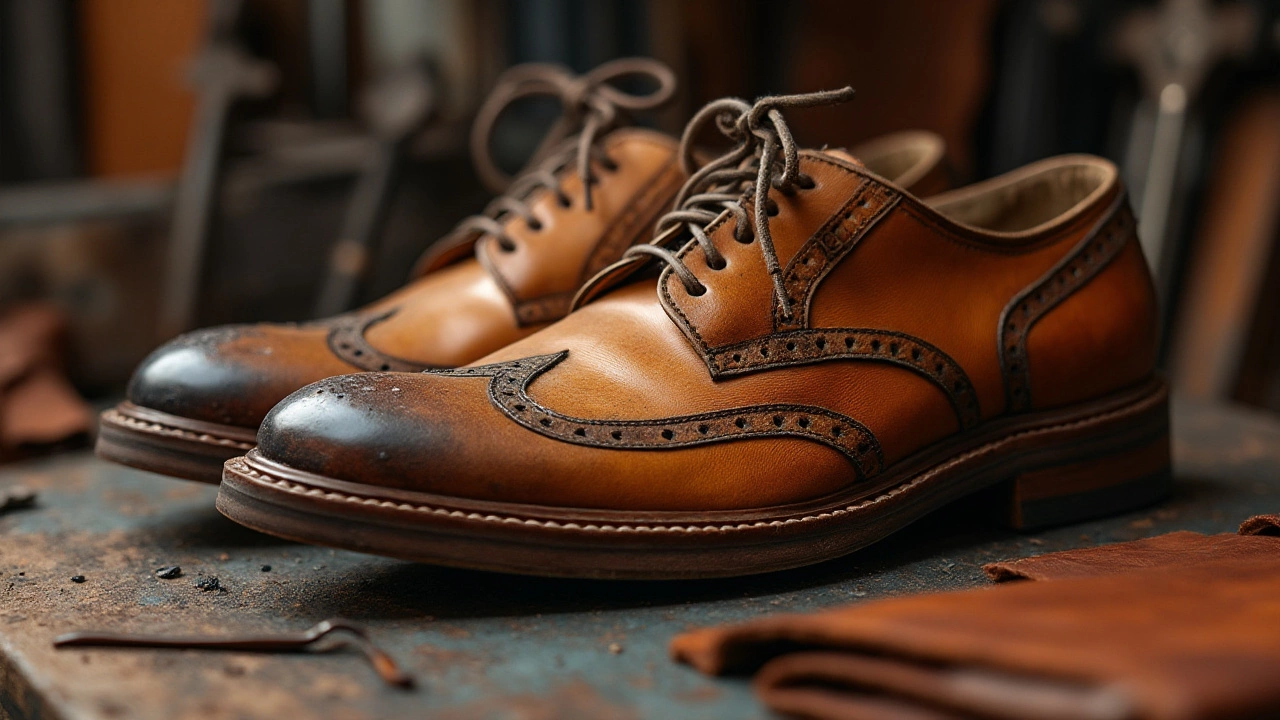Leather shoes are a timeless staple in many wardrobes, known for their elegance and durability. Yet, like all treasured possessions, they come with an expiration date. Knowing when to replace them can be a fine art, requiring a discerning eye and a bit of know-how.
While some signs of wear are visible right away, others can be more subtle, sneaking up on you slowly. Cracks, creases, and faded finishes might hint at a shoe that's nearing its end of life. But before you bid farewell, there are ways to extend their years of service.
By understanding the typical lifespan of leather shoes and keeping up with proper care, you can make informed decisions. This guide is here to help you learn when it's time to hold on and when it's best to move on, ensuring each step you take feels as good as it looks.
Recognizing Wear and Tear
Leather shoes, despite their resilience, inevitably succumb to the rigors of daily wear. It starts subtly—perhaps with a small crease or a softened sole—but over time, these minor flaws accumulate into insistent signals. One of the most tell-tale signs is the appearance of deep creases. These lines, often around the toe box, are not merely cosmetic flaws; they indicate the frequent flexing of the leather, which can compromise the shoe's structural integrity. Inspect them closely in good lighting to catch early-stage damage.
Pay attention to the underside of your shoes as well. The soles, although out of sight, tell a lot about the wear you subject your footwear to. Look for uneven wear patterns, especially around the heel—these indicate not only ageing but also possible gait issues. Deteriorating soles compromise grip and can lead to foot discomfort or injury. Consider consulting a professional if you notice severe wear; sometimes resoling or professional stretching can extend their life a bit longer.
Color fading is another sign that your leather shoes might be nearing retirement. Sun exposure and moisture can drain the rich hues from your beloved shoes, washing them out over time. Equally, the leather might exhibit small cracks or flakes. This occurs because leather, as a natural product, loses its essential oils and flexibility, especially when neglected. Regular cleaning and conditioning are essential to mitigate this.
The inside of the shoe also demands attention. linings and insoles wear out from prolonged use, losing their ability to provide comfort. Peeking inside your shoes might reveal thin spots or holes—telltale signs that the insoles no longer cushion your feet adequately. Persistent discomfort can also be a sign. It may mean your shoes have lost their support, essential for maintaining proper posture.
"Good shoes take you to good places," the famous adage by Giorgia Carnus, a respected shoemaker, holds true—ensuring your footwear is in top condition can shape your entire day.
A quirky trick to determine the extent of wear is the twist test. If you can easily twist the sole, it’s time to consider either refurbishing or replacing. When leather shoes lose their rigidity, they fail to support your feet properly, moving beyond mere cosmetic concerns. Don’t ignore the audible cues either; squeaks, snaps, or scuffs might mean it’s repair time—or bye-bye time.
Identifying these signs early not only saves potential foot problems but also aids in making an informed decision about your next steps. Whether it's a simple repair or a trip to the shoe store for a new pair, recognizing wear and tear keeps you one step ahead. And remember, a little diligence in shoe care can significantly extend the time you spend walking with confidence in your favorite shoes.

Understanding Shoe Lifespan
Leather shoes, when well-made and carefully maintained, can serve you for many years. Yet, knowing the expected lifespan of your beloved leather shoes is crucial to knowing when to start planning for a new pair. Typically, a quality pair of leather shoes lasts anywhere from two to ten years, depending on various factors, including frequency of wear, care routine, and environmental conditions. The upper part of the shoe, crafted from fine leather, is designed to last and adapt beautifully with time, resembling a well-read book with an appealing weathered character. However, the key factors dictating the longevity of your shoes often lie beneath the surface, in the soles, the stitching, and the interior cushioning.
Most leather shoes meet their demise through wear of the soles and the interior linings. You might notice the soles thinning, losing traction, or even cracking after extensive wear. For those who walk significant distances daily, the tread might wear down faster, thus propelling your shoes toward inevitable replacement. This is particularly pronounced in city environments where hard pavements are unforgiving surfaces. Meanwhile, interior elements such as cushioning degrade with repeated pressure and moisture exposure—this compromise in comfort and support marks the beginning of the end for any pair. Considering these elements, a bi-annual visit to a cobbler isn't excessive and can significantly prolong shoe life.
Comparing different types of soles can also shed light on their lifespan. Leather soles, while sophisticated and classy, tend to wear down quicker than their rubber counterparts but offer a more formal appearance. Rubber soles usually last a bit longer and provide better grip, but may not always complement certain design aesthetics. Renowned shoemakers highlight the importance of understanding these differences when evaluating your shoe’s lifespan. According to John Lobb, a respected British shoemaker, "A shoe is more than its leather; it's the sum of its parts which need care and occasional renewal." When shoes are regularly resoled and properly conditioned, they can achieve multiple life cycles, proving to be both economical and environmentally sound investments.
Factors such as climate and storage conditions further influence the longevity of leather footwear. High humidity can cause the leather to mold or develop unattractive blemishes, while extreme heat can result in the leather cracking. Storing shoes in a cool, dry place, away from direct sunlight, can prevent such damage. Using shoe trees helps maintain shape and absorb moisture, ensuring that these elegant pieces remain structurally sound and comfortable for years. It is this balance of care, complemented by occasional professional restoration, that preserves not only the lifespan but also the beauty and charm of a cherished pair of leather shoes.

Prolonging Shoe Life
When it comes to extending the life of your leather shoes, regular care and attention can make all the difference. Investing in shoe maintenance not only preserves their appearance but also keeps them comfortable and functional for as long as possible. One of the first steps is cleaning your shoes routinely. After every wear, a quick wipe down with a cloth can remove dust and dirt. This simple act can prevent particles from embedding into the leather and causing premature wear.
More in-depth cleaning sessions are crucial every few weeks, depending on how often you wear your shoes. For deeper cleans, consider a leather cleaner that is formulated specifically for shoes. These products help remove deeper stains and revitalize the leather's appearance. Polish your shoes regularly to restore their natural oils and give them a shiny finish. Choose a polish that matches your shoe color for best results.
Conditioning is another vital aspect of shoe care. Leather can dry out over time, leading to cracks and a rough feel. A good conditioner, applied every few months, will keep the leather supple and moisturized. Always condition after cleaning to lock in the product effectively. One interesting technique to further preserve leather integrity is using shoe trees. These devices help the shoes maintain their shape and also absorb moisture from the inside. Cedar shoe trees are particularly effective, as they also impart a pleasant aroma.
The importance of proper shoe care is underscored by luxury shoe brand Allen Edmonds, which states, "Regular maintenance can extend the life of fine footwear by years, ensuring each step is supported by both style and substance."
Don't underestimate the power of rotation in your shoe wardrobe. Alternating your footwear gives each pair a chance to breathe and recover from daily stress. This habit prevents overuse and breakage of individual pairs, enabling all your shoes to last longer. And when you’re not wearing them, ensure they are stored in a clean, dry place away from direct sunlight. Sunlight can fade the leather and alter its texture, diminishing its aesthetic and physical qualities.
Occasionally, a professional touch is required. Cobblers and leather specialists can perform repairs beyond the usual DIY tricks. Whether it's resoling or stitching, these experts ensure that worn shoes get a new lease on life. Investing in professional care might seem indulgent, but the longevity it brings to beloved shoes can be worth the cost. If you notice a worn-down heel or thinning sole, it’s usually better to repair than replace, as long as the upper remains in good condition.
Finally, be aware of the environment in which your shoes are worn. Leather does not fare well in excessively wet conditions unless specifically treated. Invest in a water-repellent spray to protect your shoes when the weather turns foul. By combining preventative measures, regular maintenance, and some professional help, the life of your leather shoes can be significantly extended, allowing you to enjoy them for many stylish seasons.

Knowing When to Replace
Determining when to swap out your beloved leather shoes for a new pair is not always straightforward. However, several indicators can help you make this decision wisely. Let's delve into what those signs are and how to spot them. The most obvious cue is the condition of the leather itself. Genuine leather can develop cracks and deep creases as it ages, which are telltale signs that the material has started to break down. These physical changes compromise the structural integrity of the shoe and its aesthetic appeal.
Pay close attention to the soles of your shoes as well. Even the most durable soles will wear thin with time, sometimes resulting in uncomfortable and even unsafe walking experiences. You might notice the soles have become unevenly worn, which can affect your gait and overall posture. Experts often recommend replacing shoes when the soles become noticeably flat or the heel is worn to one side. An experienced cobbler can sometimes repair soles, but when excessive damage occurs, it's often more cost-effective to purchase a new pair. There is also the inner workings of the shoe to consider. If you find yourself replacing insoles more frequently to maintain comfort, it might be time for a new pair of shoes altogether.
Pungent odors are another common sign that your shoes might be past their prime. While regular cleaning and foot hygiene can minimize this, persistent unpleasant smells often indicate that bacteria have penetrated deeply into the shoe material. Although leather has some natural odor resistance, repeated exposure to moisture can lead to lingering smells that are difficult to eliminate. At this point, the best option may be to invest in new footwear. Don't forget to check for loose stitching, another clear indication that your shoes need replacing. As with any apparel, neglecting these signs can result in further issues like splits and tears, effectively shortening the lifespan of your expensive investment.
"When shoes no longer provide the support they once did, they're not just uncomfortable; they're hazardous," says shoe expert John Doe. "Worn out shoes can contribute to foot injuries and chronic pain."
If you want to keep track of your shoe's condition, setting a maintenance schedule can help. Regular inspections every three to six months will ensure you catch any severe wear and tear before it impacts your comfort and safety. Finally, if you purchased your leather shoes for a particular event or occasion, and the style has since fallen out of fashion or no longer aligns with your aesthetic, it might just be time for a style upgrade. Fashion trends come and go, and while classic leather shoes have enduring appeal, sometimes a fresh look aligns better with current tastes.

